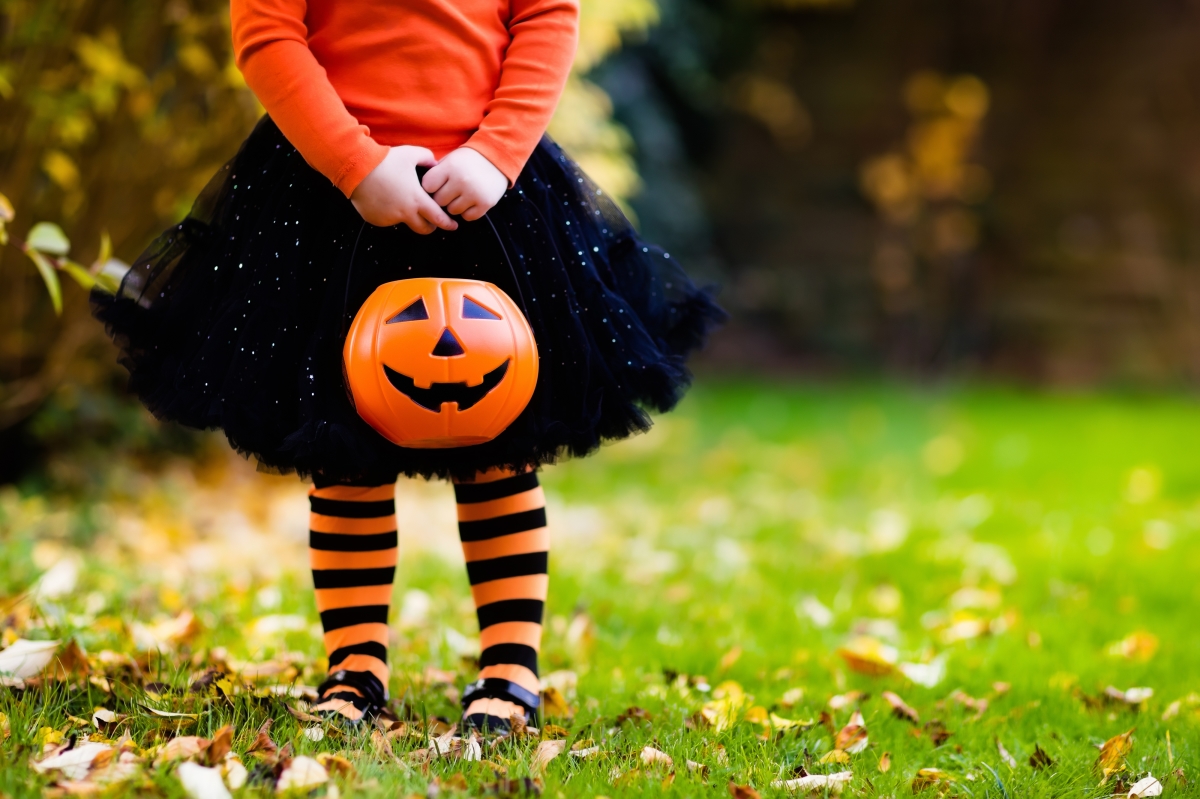From candy to costumes, decorations and lights, learn how chemistry helps contribute to Halloween safety and fun:
- Choose Flame-Resistant Halloween Costumes: The Consumer Product Safety Commission (CPSC), Underwriters Laboratory (UL), U.S. Food and Drug Administration (FDA) and American Academy of Pediatrics (AAP) all recommend that parents and kids choose Halloween costumes, masks, beards and wigs made with fire-resistant materials, such as synthetic fabrics like nylon or polyester. According to CPSC, costumes made from these synthetic fibers are “less likely to ignite, will resist burning and will extinguish more quickly if they do ignite.”The AAP also suggests that kids wear costumes that are bright and reflective. Fluorescent dyes make clothing glow and look bright to help keep trick-or-treaters visible during the daytime and near dusk.Reflective clothing, made by dipping fabric threads in millions of microscopic glass beads, is also highly visible; each bead acts like a tiny mirror and reflects light back in every direction. Reflective PVC tape also can quickly and easily enhance a costume’s visibility. For reflective clothing and reflective tape to work properly it needs to be dark and there must be a light source, such as car headlights, to reflect the light. Children can wear both fluorescent and reflective clothing to be more visible.
- Halloween Makeup and Face Paint: Vibrantly colored makeup is especially popular at Halloween. Before using it, check FDA’s list of color additives to see if the colors in the face paint or makeup are FDA-approved. If the makeup ingredients are approved they will be listed on FDA’s Summary of Color Additives. It’s especially important to check ingredients for colored makeup around the eyes, as colors that can be used on most of your skin may not be okay to use near your eyes, according to FDA.
- Creepy Decorations: In the United States, Halloween is the second-largest commercial holiday, with consumers spending an average of more than $80 on Halloween festivities. Lights, plastic skeletons and haunted house decorations all add to the fun. But haphazardly placed decorations can contribute to home fires and burn-related injuries on Halloween. In the majority of reported home fires each year, decorations are the first thing to ignite, and 40 percent of home fires are started by a candle, according to the National Fire Protection Association (NFPA). Flame retardants provide an important layer of protection against fires that can start from an overturned Halloween candle or misused lighting.
- Light up the Night: Chemistry powers the lights that help make sure trick-or-treaters are visible on dark streets. Glow sticks, for example, typically contain a hydrogen peroxide solution, a phenyl oxalate ester solution and a fluorescent dye (sometimes called a fluorophore), which combine to create a shining light. Flashlights or headlamps made from shatter-resistant polycarbonate plastic and powered by lithium batteries also can shine a bright path for little candy collectors. Both lithium and lithium-ion batteries charge quickly and have a high power density for more battery life, in part because of chemistry. Some LED lighting can also be used in place of candles in pumpkins. If you still plan to use traditional candles, make sure candles and jack-o-lanterns are located a safe distance from decorations, window treatments, papers and other flammable materials.
- Inspecting Candies and Treats: Plastic wrapping on food helps to prevent the spread of germs and food-borne illnesses. On Halloween, factory plastic wrapping also helps parents to monitor their kids’ candy for food tampering. The U.S. Food and Drug Administration (FDA) advises parents to tell children not to accept or eat any treats that aren’t commercially wrapped. Curious about what’s in your wrapped candy? The primary ingredient in most candies is the chemical sucrose, known more commonly as sugar, which is comprised of 12 atoms of carbon, 22 atoms of hydrogen, and 11 atoms of oxygen. Learn more about sugar and other chemical compounds that make candies sweet here.
Learning about science doesn’t have to be spooky. Visit the American Chemical Society for Halloween-related chemistry activities for kids.
Happy Halloween During Covid-19
Due to concerns about COVID-19, some communities and individuals may curtail traditional Halloween activities to avoid exposure to the virus. The U.S. Centers for Disease Control and Prevention (CDC) offers suggestions and alternatives for participating in Halloween festivities during the COVID-19 pandemic.
Masks
CDC recommends not using costume masks as a substitute for cloth masks unless they are made of two or more layers of breathable fabric and cover the mouth and nose. Wearing a costume mask over a cloth mask is not recommended because it can make it harder to breath. An alternative is to wear a Halloween-themed cloth mask.

